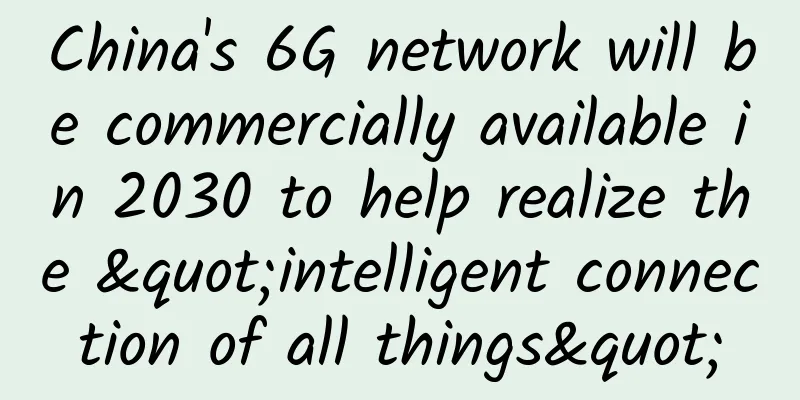McKinsey: These ten trends are enough to subvert the existing IT infrastructure

|
When it comes to hardware and IT infrastructure, people always think of large devices in data centers or basements, which seem unlikely to have any highlights. But in fact, whether it is servers, storage facilities or various software, they are the center of innovative and disruptive technologies. So what is driving this trend of disruption and innovation? What will business technology strategy bring us? Both IT infrastructure suppliers and customers must think about these questions when formulating future strategies. McKinsey & Company, a well-known consulting firm, has brought us its predictions for the top ten trends that may redefine IT infrastructure in the future.
First, familiar trends will gain momentum. While these trends are familiar to us, their recent acceleration and impact may surprise people. 1. From software to hardware, the "as a service" model will appear in all aspects. Enterprise buyers will increasingly prefer consumption-based pricing models, whether for software or hardware, and this phenomenon has already begun to appear in all aspects of the market. For enterprise users, their operating model changes from capital expenditure to operating expenditure, which helps to free up capital and improve overall flexibility. From 2015 to 2016, revenue from infrastructure as a service (IaaS) and platform as a service (PaaS) increased by 53%, making it the fastest growing part of the cloud and infrastructure services market. Considering that the total cost of ownership of cloud computing and cloud storage can be 40% to 50% lower than that of on-premises deployment models, it is obvious that enterprise users are turning to the cloud. In addition to software, IT vendors and customers are also trying to charge annual subscription fees for the use of traditional hardware. 2. Public cloud will become mainstream. It is a fact that companies are moving a large portion of their operations to the cloud, and this process is even more dramatic in large enterprises. We have seen companies such as Capital One, GE, Netflix, and Time Inc. significantly reduce or even eliminate their private data centers and move operations to the cloud. It is predicted that by 2018, server and storage capacity services will account for 80% of all cloud services. Amazon is currently the leader in the IaaS market, with about 40% of the market share, followed by Microsoft, Google and IBM, which together contribute about 65% of the market share. As local data centers decline, these four companies may account for half of the global IT infrastructure market by 2020. If this is true, only companies with large capital operation capabilities can compete with them. One potential competitor that cannot be ignored is Alibaba, which recently achieved triple-digit revenue growth in its cloud computing business, mainly due to the rapid growth of the Chinese cloud computing market. 3. Increase in the number of open source projects used. According to a survey by Black Duck and North Bridge, about 65% of companies increased their use of open source software between 2015 and 2016. Large vendors rely mainly on programs such as Apache Spark, Kubernetes and OpenShift. Large companies such as Airbnb, Airbus, eBay, Intel and Qualcomm are using Google's open source code library TensorFlow for machine learning. At the same time, Facebook's Open Compute Project is also helping customers improve the efficiency, flexibility and scalability of hardware, so as to apply open source projects to their own data centers. AT&T, Deutsche Telekom and Goldman Sachs are all participants in this project. 4 Cybersecurity remains a major issue. Cybersecurity remains the top priority for senior executives and boards of directors. The number and sophistication of cyberattacks are increasing across all sectors, with 80% of technology executives saying their companies are working to build a solid defense system. However, due to a lack of cybersecurity experts, many companies are unable to recruit the right talent, which has led them to look to managed security services. Cloud-based security products are becoming increasingly attractive to corporate users, with McKinsey predicting that by 2020, cloud security services will account for 60% of all security services, up from just 10% in 2015. 5 The mainstream market will accept "white box" hardware. Traditionally, IT infrastructure vendors have relied on branded systems assembled from their servers, storage, and network services. To do this, they outsourced hardware manufacturing to original design manufacturers (ODMs). However, this model has become outdated because customers are no longer willing to pay for assembled systems. Instead, customers go directly to ODMs and use open source projects such as the Facebook Open Compute Project to customize their data center configurations. Typical cases include IBM, Fidelity Investments, and Verizon. And as we will discuss later in this article, many ODMs are located in Asia, so Asia will get more hardware business. IDC predicts that by 2020, such "self-built" servers will account for half of the super-large mainframe servers. 6. IoT commercial applications will be officially launched. McKinsey predicts that B2B applications will account for almost 70% of all IoT applications in the next decade. According to its 2017 survey on enterprise IoT, 96% of companies will increase their spending on IoT in the next three years, and some companies even said that their spending on IoT-related capabilities will account for a quarter of their total IT spending. The most common use cases in IoT include providing operational visibility, optimizing business operations, and assisting in the development of new business models. The increase in the use of IoT applications has even occurred in industries that are more resistant to emerging technologies, such as the oil and gas industry. The growth of enterprise IoT applications will greatly increase users' demand for computer and storage facility capabilities, and users will also want suppliers to provide them with larger-scale resources and IoT-specific PaaS solutions. BI Intelligence predicts that by 2020, there will be more than 5 billion IoT devices (such as inventory control and security monitoring tools) worldwide, which will require edge computing solutions because these devices must be able to collect and process data in real time. Edge solutions will allow data processing inside the device or at the gateway, rather than in the cloud or data center, which will reduce latency and connection dependency. McKinsey predicts that the market size of the Internet of Things will grow to $500 billion in 2020, of which about 25% will be directly related to edge technology. Edge computing will help improve data compression and transmission in the connection layer of the technology stack, thereby reducing network bandwidth and increasing the scope of application of the Internet of Things. After reviewing these trends, we know that they will continue to drive global technology development and digital transformation of companies. But will there be new trends emerging in the coming years? The answer is of course yes, and some new development trends are also changing and even redefining the application scenarios of IT infrastructure for suppliers and customers. These include the shift to the Asian hardware market, the use of DevOps on software and hardware, container-first architecture, and the growth of artificial intelligence (AI) and machine learning optimization stacks. 7 The hardware infrastructure market is shifting to Asia. Asian manufacturers have been trying to make headway in the IT infrastructure market, which is dominated by U.S. suppliers. For example: Huawei plans to invest about $1 billion in data center equipment to consolidate its position in the server market. Lenovo acquired IBM's x86 server business in 2014 to help it expand its presence among large global enterprises. Important shifts are also occurring among Asian ODMs, which are gaining market share in the hardware market as white box systems become more popular. For example, Taiwan-based Quanta Computer has been seeing strong revenue growth in cloud computing servers, storage, switches, and IoT devices. Meanwhile, several Asian ODMs are providing servers to some of the world’s top hyperscale cloud providers, including Amazon, Facebook, and Google, which are investing heavily to expand their data center infrastructure. As mentioned earlier, Facebook’s Open Compute Project is gaining momentum as it allows users to plan and design customized servers, storage, and networks. Some Asian ODMs also offer off-the-shelf products based on designs from open source projects. If current trends continue, Asian ODMs could double or triple their share of the hardware market by 2020. 8. DevOps in software and hardware. IT vendors must provide customers with new features at a faster pace. At the same time, enterprise users also expect higher software and hardware availability, and they want 7x24 all-weather operational support. By promoting high collaboration across the entire IT value chain, DevOps can help vendors and customers achieve their respective needs. The new DevOps business model extends application development and integrates it with application operations and IT infrastructure. Many companies understand the benefits of this model and are working in this direction. In McKinsey's 2017 IT Services Survey, 80% of respondents said they have already implemented DevOps practices in a department of their company. In addition, 53% of respondents said they will apply DevOps throughout the company by 2020, while only 37% of companies currently apply DevOps throughout the company. According to these trends, the demand for DevOps talents will surge in the next few years. However, companies may have problems finding the right talents. McKinsey found that 40% of respondents said that the lack of internal talents and skills is the main factor preventing DevOps from becoming mainstream in the market. 9. Container-first architecture. Containers are no longer limited to niche development environments, and have surpassed virtual machines to become the preferred deployment unit in the cloud. Atlassian's report shows that 34% of software practitioners use containers in their development teams. The most striking thing about containers is their growth rate. In the 2016 RightScale survey, only 18% of respondents said they deployed containers in production environments. In the 2017 survey, Docker has become the most commonly used DevOps tool by users. The growth of containers has been accompanied by the increase of microservice architecture (software application development in small independent units), but at the same time, as developers make more refinements to microservices, they also face many challenges that hinder the further development of container applications, such as security, management or coordination, and scalability issues. In parallel with the above trend is application atomization. It involves abstracting computing resources and deploying functions in units, so-called functions and services. This technology will eliminate the need for companies to configure infrastructure or manage computing resources for these functions. 10. Growth of artificial intelligence (AI) and machine learning optimization stacks. After years of development, AI has made progress in many fields. For example, it helps utilities predict electricity demand or helps automakers develop self-driving cars. The development of various new technologies is also driving this wave, including ever-increasing computing power and more complex algorithms and models. Perhaps the most important reason is that the amount of data is growing at an explosive rate. Currently, the amount of data collected by network devices every day can reach billions of GB. According to McKinsey, in 2016, AI startups attracted a total of $26 billion to $39 billion in investment, three times that of 2013. Most of the AI investment comes from giants such as Amazon, Baidu and Google, who are actively promoting the innovation and development of related semiconductors, infrastructure software and systems. Some of these companies are building new computing paradigms, such as Google's tensor processing unit, Nivida's intelligent graphics processing unit (GPU) and Xilinx's field programmable gate array. At the same time, large suppliers also provide AI and machine learning capabilities to corporate customers through the cloud. As companies gain more advanced AI and machine learning technologies, more jobs will become automated. According to MGI, half of the global labor market will be automated in the future, with a total salary of about $15 trillion. Technology's ability to disrupt infrastructure is unprecedented, but it brings both opportunities and risks to industry participants and customers. Executives of infrastructure suppliers must change their portfolios and develop new market strategies to drive growth. They should also have the basic capabilities necessary to maintain long-term success, including those related to digitalization, analysis, and agile development. Although these require more capital and capacity, the company's investment will be rewarded by customers. |
<<: MIIT releases 5G spectrum planning, China launches mid-band 5G commercialization
Recommend
Are we technologically ready for the coming era of high-definition video?
[51CTO.com original article] Almost no one doubts...
5G to B development requires strategic patience
After more than two years of development, 5G has ...
Huawei Global Analyst Conference 2017: Using cloud as the engine to promote global digital transformation
[51CTO.com original article] Although the 2017 Hu...
PoE Troubleshooting Guide: Common Problems and Solutions
Power over Ethernet (PoE) is a revolutionary tech...
The mature gigabit wireless network industry chain is the cornerstone for the 5G era
Recently, the biggest event of China Unicom after...
CloudCone: KVM in Los Angeles MC Data Center starts at $1.99 per month, supports Alipay/PayPal
CloudCone is a foreign VPS hosting company founde...
The 400G era is coming, and new optical fibers may be the best partner
With the continuous emergence of high-definition ...
With this, you will never be able to steal my chicken again!
When I was a kid, there was always a big yellow d...
How blockchain can change the way SMEs conduct business
As the application of blockchain technology incre...
230,000 new cases every day: How they are "used by 5G"
"Why are users required to activate 5G cards...
SpartanHost Seattle VPS restock, $8/month-2GB/30G NVMe/3TB/10Gbps bandwidth
SpartanHost has updated its inventory again. Some...
Static routing or dynamic routing, an example to make it clear!
What is routing? Routing refers to the path that ...
VULTR: KVM in 17 data centers in Japan, South Korea, Singapore, etc. Monthly payment starts from 3.5 USD, supports hourly billing, and registration will give you 100 USD
VULTR is a foreign VPS merchant founded in 2014. ...
Exclusive reveal! How 5G can help secure large-scale events
The wonderful opening ceremony of the 2022 Beijin...
F5 Launches Industry’s First Integrated Application Delivery and Security Platform to Enable Hybrid Multi-Cloud Infrastructure in the AI Era
F5 recently announced the launch of the F5 Applic...









